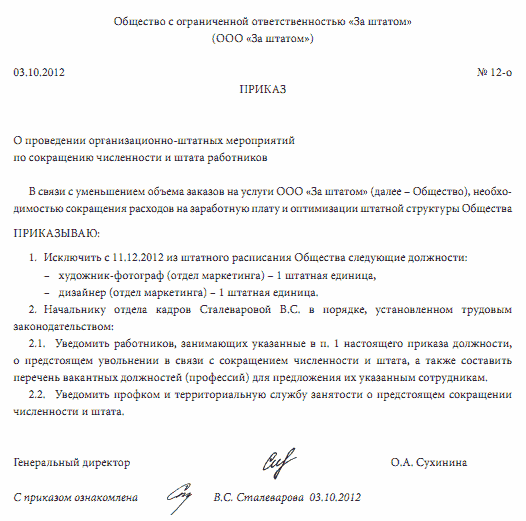Obosnovanie Otkritiya Novoj Shtatnoj Edinici

In 1909, Berlin theology professor Adolf Harnack issued an appeal to Kaiser Wilhelm II. As a close adviser to the Kaiser, a member of the Academy of Sciences and director of the renowned Royal Library, Harnack was one of the most innovative and influential science managers of his time. His memorandum outlined a comprehensive reform of the science system. It centred on Harnack’s call for Germany to establish independent research institutes to co-exist alongside the universities. He proposed that they should conduct specialized basic research, predominantly in the natural sciences, and explained that the rapid pace of industrialization since the mid-19th century had demonstrated that many new technical problems could only be solved with greater knowledge of chemical or physical principles.
Advances were also being made in the fields of biology and medicine, he wrote. Harnack’s memorandum paved the way for structures that still characterize the German science system to this day and facilitated specialized research and Big Science as we know them today. In the interests of implementing these structures, Harnack proposed the foundation of a brand new type of research association for the advancement of science: The Kaiser Wilhelm Society. Advancement of Science took place at the Berlin Academy of Arts on 11 January 1911.
Law firm Miro Senica and Attorneys, Ltd. OPMSO objave 2019-01-25T07:26:54+00:00 Law is our life. We love it – and we understand it. Our hard work, determination and integrity have made this law firm what it.
Wishmaster 4: the prophecy fulfilled. Currently It supports 55 formats of video downloads.
A total of 83 voting members of the new association attended the meeting. The list of founding members reads like an extract from the “Who’s Who” of German industry. The Kaiser had announced its foundation a few months prior, on Berlin University’s 100th anniversary. The new Society was to complement the work of the universities and academies with research into the natural sciences and thereby keep Germany competitive in the international arena.
Influential science manager and scientist Adolf Harnack was appointed President. The Kaiser himself was the patron, thus granting the new institution a great deal of prestige and attracting numerous powerful donors, including many members of the Jewish middle classes. Minerva was chosen as the Society’s symbol, the Roman goddess of science being the embodiment of wisdom, valour and endurance. The first of the KWS’s institutes were able to move into their own purpose-built accommodation in October 1912. The Institute for Chemistry with Director Ernst Beckmann and the Institute of Physical Chemistry and Electrochemistry with Director Fritz Haber were both inaugurated in Berlin.
In addition, you can see the final results quickly during the creation of the site; definitely will save your precious time. Through this program, you can create your websites in just a few easy steps. No programming skills are mandatory to use. Incomedia website x5 evolution 10 crack serial. Website X5 Crack Plus License Key INLC Serial Number The interface of this software is attractive and easy to use, and the navigation of features is trouble-free.
They formed the core of the new research campus at Dahlem, which went on to grow rapidly: the Kaiser Wilhelm Institute for Experimental Therapy was opened as early as 1913, followed by the Institute for Biology in 1915. But the KWS was also active beyond the capital: In 1912, Jewish art collector Henriette Hertz bequeathed the KWS the Palazzo Zuccari in Rome, along with a significant library of books on the history of art and a substantial sum in the form of endowment capital.
It was there that the KWS set up a research institute dedicated to the study of the history of art under the name Bibliotheca Hertziana. As a result, the human sciences had a place within the KWS right from the start.
Even though this had not been formulated as a key element in the Society’s original mission, many other institutes dedicated to the human sciences were to follow. Fritz Haber directed his Institute of Physical Chemistry and Electrochemistry in Berlin-Dahlem to focus fully on military research into war gas from the very first year of the war. The institute reported directly to the Supreme Army Command from 1916. Haber himself became known as the father of gas warfare, which was to have a lasting impact on the Kaiser Wilhelm Institutes in Berlin, where the workforce amounted to as many as 1500 staff. The KWI for Chemistry was also involved in the work, and scientists at the KWI for Experimental Therapy were working on the refinement of vaccines to protect German soldiers against typhoid and cholera.
Most of the KWIs endeavoured, however, to continue their pre-war work, especially the institutes outside Germany, though this proved difficult. Kaiser Wilhelm II abdicated in 1918, resulting in Germany getting a democratic constitution for the first time in its history. The KWS Senate decided in 1919, however, not to change to the Society’s name. During the Weimar Republic, Reichstag deputies, particularly members of Germany’s left-wing fractions, attempted repeatedly to have the name changed.